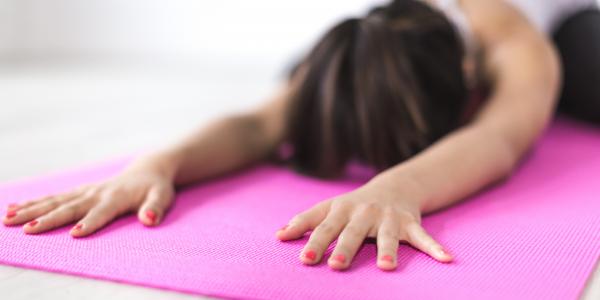Are You Getting Your Daily Dose of Physical Activity?

Most Americans struggle to get their recommended amount of daily physical activity. Are you one of them? Not to worry, with a little knowledge and 20 minutes a day, you can be on the path to better health.
For several years, scientists have observed the many benefits gained from engaging in regular physical activity. Numerous studies have supported a link between exercise and the effective treatment of anxiety, depression, and sleep disorders. Conditions like type II diabetes, high blood pressure, high cholesterol, and heart disease can all be mitigated or completely avoided with regular activity. In fact, a recent study by Moore et al. (2016) involving 1.44 million people revealed that the risk of 13 different types of cancers were reduced when the subject participated in regular physical activity. Despite the recognized, and still-emerging benefits of exercise, many Americans struggle to fulfill the Department of Health and Human Services’ (DHHS) recommendation for daily physical activity.
For most adults, The DHHS recommends at least 150 minutes (2.5 hours) of moderate aerobic activity per week, or 75 minutes (1.5 hours) of vigorous aerobic activity each week. You may choose to blend some combination of both moderate and vigorous activity each week to reach your recommended ‘minutes total’. If you do the math, these guidelines indicate that for good health you may only need to average about 10 minutes of vigorous activity per day. If vigorous activity isn’t your thing, 20 minutes of daily moderate activity will do the job.
Ten to twenty minutes to achieve better health seems pretty straightforward, right? Yet the Office of Disease Prevention and Health Promotion reports that over 80% of adults don’t meet daily recommendations for aerobic and muscle strengthening activity. And when we step back and examine our daily lives through a broader lens, it’s little surprise.
While most folks would love to improve their health through exercise, it can be a tremendous challenge to put into practice. After juggling work, family, and other obligations, finding the time for an evening walk or mustering the energy for an early-morning gym session can be daunting if not impossible. Take a moment to reflect on your daily routine. Does it include a scheduled time for movement? If not, don’t fret- MSU Moves is here to help you learn strategies for incorporating fitness into your everyday life. Filling 10-20 minutes each day may be easier than you thought.
Moderate Activity should require effort, but not be overly taxing or exhausting. Scientifically, moderate activity is described as activity that falls between 3 - 6 METS. One MET (Metabolic Equivalent) is the amount of oxygen a person consumes while at rest (sitting quietly). Therefore an activity that requires 2 METS would demand twice the amount of oxygen that a person would typically need while at rest.
Knowing the MET system can serve as a nice frame of reference for the intensity level of your activity. Activities that demand elevated, but not substantial increases in heart rate and respiration are likely to fall in the moderate category. Again, the DHHS recommends adults engage in 150 minutes per week of this activity per week.
Some examples of moderate activity may include: Brisk walking, gardening, water aerobics, ballroom dancing, sports with children, casual bike riding, domestic chores, and yard work.
The workday can be a great opportunity to start incorporating these moderate-intensity activities into your lifestyle. Here are a few easy ways to get started at work: Take the stairs instead of the elevator, park farther from your building than normal, try a standing desk, instead of emailing or calling a colleague- walk over and talk with them, hold ‘walking meetings’ rather than meeting in an office, join a lunchtime fitness class, get up and stretch every 30 minutes.
Vigorous Activity is defined as activity that requires more than 6 METS. Considerable effort is required, along with a substantial increase in heart rate and more rapid breathing. Remember, if you engage in vigorous activity only, at least 75 minutes of weekly engagement is recommended. Otherwise you may blend moderate and vigorous activities to reach your recommended number of minutes each week. A few examples of vigorous activity include: Running, fast swimming or biking, aerobics/group exercise, competitive sports or games, shoveling snow, singles tennis, hiking/backpacking, jumping rope.
If you’re unsure if your activity is moderate or vigorous in nature, you can use the ‘talk test’. The talk test is an easy way to determine the relative intensity of an activity. If you can talk but not sing, the activity is likely moderate. If you can’t say more than a few words before needing to pause for a breath, then your activity is vigorous. Keep in mind that the talk test is a relative measurement, so your ‘moderate’ may not be the same as your neighbor’s - and that’s okay. What matters is that you’re making the effort to fulfill the body’s need for regular physical activity.
Ready to take the next step? Check out the MSU Moves website to learn more about fitness, recreation, and movement resources available on campus.
Moore, S. C., Lee, I. M., Weiderpass, E., Campbell, P. T., Sampson, J. N., Kitahara, C. M., ... & Adami, H. O. (2016). Association of leisure-time physical activity with risk of 26 types of cancer in 1.44 million adults. JAMA internal medicine, 176(6), 816-825.
By TJ Hall
Related Articles

Want a better night’s sleep? Get Moving!
The connection between exercise and sleep is very real. This article examines current research, and how your everyday activities may be influencing sleep patterns.
.jpg)
Physical Literacy: The Foundation for a Life of Movement
Early development of physical literacy is linked to future success in sport and activity participation. In the long run, establishing active habits in children sets them on the path to happier and healthier lives.

Bend, Not Break: The Importance of Maintaining Flexibility
You may not think about it often, but flexibility impacts our everyday lives. Learn more about the physiology of flexibility and why you should consider making stretching part our your routine.

A Brief Guide to the Body's Aerobic System
Aerobic exercise is a cornerstone of physical wellness. Learn more about the function of the aerobic system and the role it plays in supporting good health.





